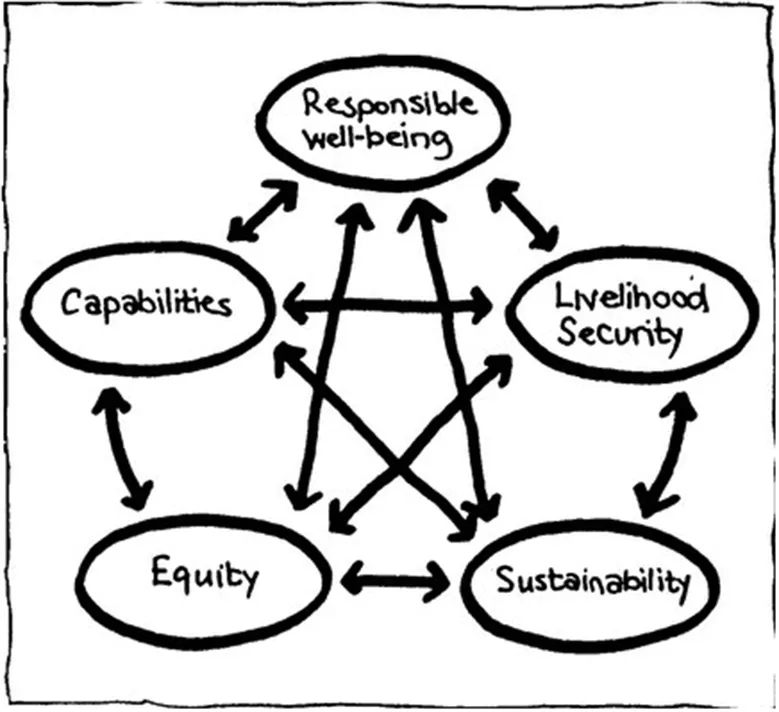
Sustainable Development Goals and Migration
- English
- ePUB (mobile friendly)
- Available on iOS & Android
Sustainable Development Goals and Migration
About This Book
This book looks at migration in contemporary society and its interrelations with development. It presents the complexities and dilemmas associated with migration, the changes in theoretical and historical perspectives on migration and development, and the role of policies and the sustainable development goals in this context.
The volume views migration as a phenomenon for advancing human development outcomes. It deals with wide-ranging issues including labour migration, the idea of decent work, migration and transnationalism, remittances, social networks and capital, and addressing poverty. The chapters highlight the focus of the Sustainable Development Goals (SDGs) and its relevance on migrant rights, safeguarding livelihoods and health. They also offer insights into regional and international co-operation on policies for migration, social growth and protection, and citizenship. With comparative analyses of data, trends and development indicators as well as various case studies, this volume examines the impact of migration on international relations and politics, labour market outcomes, gender, youth and education among others. It also discusses the loss of lives and livelihoods due to the Covid-19 pandemic, its impact on migration and the effects of the pandemic on the contemporary discussions on migration and SDGs.
Rich in empirical data, this book will be an excellent read for scholars and researchers of migration and diaspora studies, development studies, refugee studies, public policy and governance, international relations, political studies, political economy, sociology and South Asian Studies.
Frequently asked questions
Information
1 Contours of migration and development in the SDG agenda
Introduction
Migration and development – outgrowing definitional boundaries
| The human condition | Capabilities, deprivation, entitlement, livelihood, poverty, vulnerability, well being |
| Organization, power and relationships | Accountability, consumer, decentralization, empowerment, ownership, participation, partnership, process, stakeholder, transparency |
| Domains and dimensions | Civil society, environment, globalization, governance |
| Values | Democracy, diversity, equity, gender, human rights, pluralism sustainability |
| Source: Robert Chambers (2005). | |
- Development must put people at the centre of concerns
- The purpose of development is to enlarge all human choices and not just income
- The human development paradigm is concerned both with building human capabilities (through investments in people) and with using those human capabilities more fully (through an enabling framework for growth and employment)
- Human development has four essential pillars: equity, sustainability, productivity and empowerment. It regards economic growth as essential, but emphasizes the need to pay attention to its quality and distribution, analyses at length its link with human lives and questions its long-term sustainability
- The human development paradigm defines the ends of development and analyses sensible options for achieving them.

Theoretical approaches
Table of contents
- Cover
- Half Title
- Title Page
- Copyright Page
- Contents
- List of figures
- List of tables
- List of Contributors
- Preface
- 1 Contours of migration and development in the SDG agenda
- 2 Migration and SDGs: Towards new data approaches
- 3 An overview of migration-specific SDGs in the Indian context and the way forward on target 10.7
- 4 SDG implementation: A policy analysis of internal migration in India
- 5 Migration governance and the global compact on migration
- 6 Moving towards a better future: Education through placemaking with migrant children
- 7 Young migrant women from South Asia in the UAE: Issues and challenges
- 8 Young bonded labourers: From the lens of migration and the SDGs
- 9 Recruitment practices of Gulf migrants in Telangana: A boon or bane?
- 10 Subcontracting and construction sector labour migration to Kerala: Challenges to achieve sustainable development goals on decent work
- 11 Potential migration: A case study of youth from Kerala
- 12 Epilogue: Impact of COVID-19 on achieving migration-specific SDGs
- Index